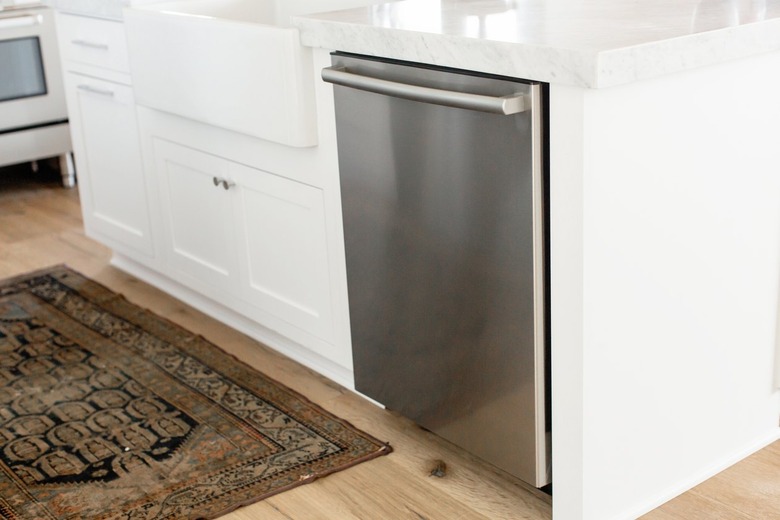What Happens If My Dishwasher Is Not Level?
Does your dishwasher seem like it's leaning a little? Or perhaps it seems like it's tipping to the front or back. You might even notice your Samsung dishwasher is leaking at the bottom of the door and start to get suspicious about the installation. It might not seem like a big deal to have your dishwasher a little out of level, but an unlevel dishwasher can actuallymcause some potentially serious problems in your kitchen. Understanding the potential issues reinforces why you should level the appliance.
Unlevel Dishwasher Performance Issues
Unlevel Dishwasher Performance Issues
If your dishwasher is uneven, you might notice an impact on how well it works. It needs to be level for the arms to spin properly and for the machine to clean well. If dishes don't seem to get as clean as you want, grab your level to make sure it's installed properly.
Unlevel Dishwasher Damage
Unlevel Dishwasher Damage
When the dishwasher isn't level, it can cause water to pool in certain areas. It might pool against the gasket that keeps the door sealed. The excess pressure can eventually damage the gasket, which will force you to replace the parts. Leveling your dishwasher is easy and can save you money by preventing damage.
A dishwasher that's leaning in one direction can also hinder drainage. Proper installation allows the water to flow easily into the drain. If it's tilted, the water might pool in other areas instead of going toward the drain or it might drain more slowly than normal. Water that remains in the dishwasher can become stagnant, which can make the appliance stinky over time. If there are pieces of food left in the water, it will stink even worse.
Water Leakage Problems
Water Leakage Problems
A dishwasher that leans in one direction can cause water to leak. If it leans forward, you might notice water leaking from underneath the door. A minor leak might go unnoticed, but the dishwasher might start leaking so much that the water pools on the floor near the appliance, which will damage the floor.
Not all leaks are caused by the appliance being uneven. The door or dishwasher tub could have a leak due to damaged parts that have caused the water to pool. Verify that the dishwasher is level first to see if the leak fix is an easy one. If it's level, you might need a repair service to investigate the cause of the leak.
How to Check for a Level Dishwasher Installation
How to Check for a Level Dishwasher Installation
GE Appliances offers an easy way to see if the dishwasher is level; simply open the door and see what happens with the rack. If it rolls out on its own, the front of the appliance is likely lower than the back. If you pull the rack out and it rolls back in on its own, the back is likely lower than the front. You can also use a small level to check. You'll want to check from side to side and from front to back to ensure it's level in both directions.
How to Level a Dishwasher
How to Level a Dishwasher
Dishwashers come with adjustable legs that help you level the unit. Some have adjustable legs on all four corners. Others only have adjustable legs on the front. If you're installing a dishwasher on an uneven floor, you'll need to adjust the leveling leg to compensate for the floor.
Check the owner's manual for your dishwasher to determine how to adjust the legs. They typically need to turn to move each corner up and down. The manual can tell you which way to turn to raise and lower the unit. You can also test it by turning a leg either clockwise or counterclockwise and observing whether the unit raises or lowers.
Make small adjustments to get the appliance even and use the level to check it after each adjustment. Continue making adjustments until it's completely level. Check the door once you get the dishwasher level to ensure it still opens and closes freely without hitting the countertop or other structures.
